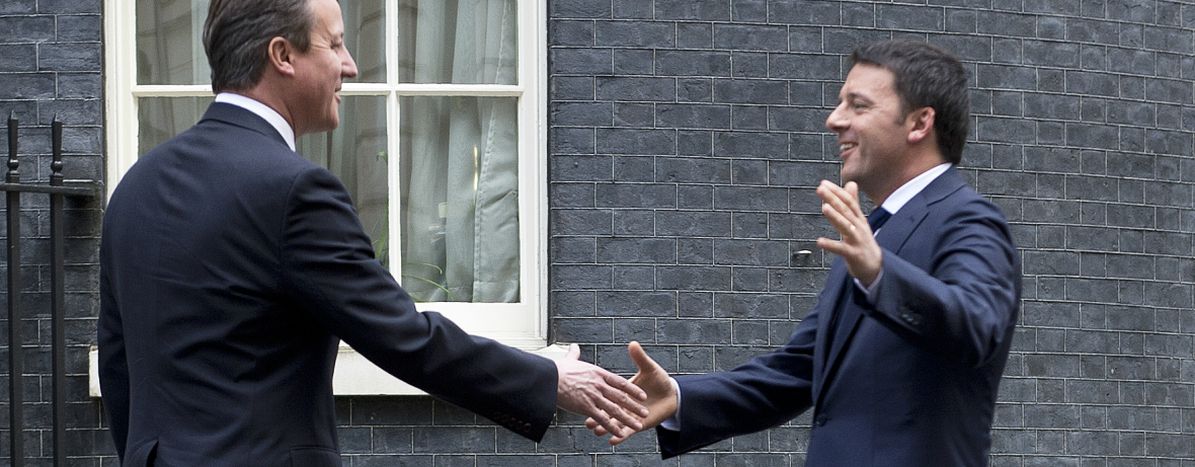
2016: The Year of the Referendum
Published on
2016 has been labelled as many things, but one thing is for certain: referendums have become a sort of tradition. From Brexit to Italy’s attempts at reforming their constitution, the results of these efforts have been wildly varied. Two Italian journalists based in the UK take a look at the similarities and differences of the referendums to understand what impact they might have in 2017.
"Post-truth" and "populism" are two words that came up quite often to sum up the events that occurred in 2016. They were used to describe the Brexit referendum, Donald Trump’s victory, and even the Italian Prime Minister Matteo Renzi’s defeat earlier this month.
In it to win it
The government’s proposals, written by Renzi’s Minister for Constitutional Reforms Maria Elena Boschi, called for a comprehensive and complex change of the Italian Constitution which was designed after World War II. The reform suggested downsizing the Senate of the Republic to a compressed Senate consisting of regional mayors and councillors; a new election system for the Supreme Judges and the President; more centralised power; and abolishing provinces and the National Council for Economics and Labour (CNEL).
Brexit and the "No" vote in Italy shared some similarities. Matteo Renzi and David Cameron both triggered a referendum that would have divisive and polarising effects, with the goal of strengthening their positions whilst weakening that of their opponents, both internally and externally.
Both leaders chose to add another risky element in the midst of these two destabilising referendums: they put their own careers at risk, but in different ways. In doing so, they signed their own political death wishes. Unlike Cameron, though, it is not clear whether Renzi considers the result of the referendum as his final straw or just a mere setback.
What are we voting for?
Many media outlets claimed that the Italian vote was being framed as a vote on Europe. According to the Italian Constitution, this is practically impossible. International agreements and treaties cannot be subject to popular vote. What is true, though, is that both Cameron and Renzi tried to promote their own visions of Europe through these reforms. Whilst Cameron focused more on trade and distancing the UK from any sort of political union, Renzi promoted a “social Europe” – an unlikely scenario considering the candidacy of Thatcherite Francois Fillon in France and that of Angela Merkel in Germany.
It's personal
Matteo Renzi nicknamed himself the "Italian gatekeeper," and claimed to be the only man able to keep anti-establishment (the Five Star Movement, led by Beppe Grillo) and far-right forces (the Lega Nord, led by Matteo Salvini) far away from the centre of Italian policy and decision-making. The latter allowed him to gain the support of voters who normally wouldn’t have supported him. But this newfound group of homogenous supporters didn’t win against the accozzaglia (meaning “mob” in Italian) that voted “no”. The fact that this “mob” of young and unemployed voters voted against the reform is a massive blow to the party, which is considered to be the heir of the Italian Communist Party.
Even if in the UK the Labour Party, the Green Party, the Scottish National Party, and the Liberal Democrats might find common ground in some points like remaining in the single market and promoting the freedom of movement, it is unclear as to what will happen in Italy. The forces at play are so varied, from the Five Star Movement to the Lega Nord, that it is difficult to compare political agendas.
Unlike Cameron, though, Renzi made the referendum personal. In doing so, he chose to bear the full weight of its outcome, putting his government’s survival on the line. His rivals quickly seized the opportunity to oust him, and immediately accused associations and trade unionists of siding with neo-fascist, grey-haired Christian Democrats and former PM Silvio Berlusconi. Renzi gave way for his opponents to try and send him home rather than discuss matters at hand. Suddenly everybody showed their discontent with his 1000 days as Prime Minister, especially the younger generation. The financial apocalypse predicted by the "yes" supporters has not yet happened; the morning after the polls came through, the Euro was almost untouched and the spread with the German Bunds was stable.
Misleading numbers
What’s more: numbers were a central aspect of the Brexit referendum, but were almost entirely absent from the debate on Italy’s reform. Despite their "post-truth" nature, data and budgets were widely used to support the case against the UK’s place in the EU. In Italy, however, the effects that the polls would have on the economy had never been discussed.
Renzi’s rivals, much like the Brexiteers, didn’t have a transition plan in case of their victory. But at least those who voted 'leave' were offered a range of options, even if most of them seemed unrealistic or even unfeasible. All the main players during the debate on Brexit had a vague idea on their version of Europe: David Cameron’s less bureaucratic one; Jeremy Corbyn’s social one; Nicola Sturgeon’s decentralized one; and Tim Farron’s more integrated one. Italian supporters of the Constitutional referendum didn’t manage to explain clearly what positive consequences would come of the reform, just as the “no” voters couldn’t propose an alternative plan to modify the crooked parts of the current Constitution.
These are major differences between the Italian and UK referendum. The Brexit vote was actually focused on Europe and there was no directive given to the members of parties; there were pro-Remain Tories and pro-Leave Labour. That, along with the fact that Italy made its vote personal, sets these two referendums apart.tefs



